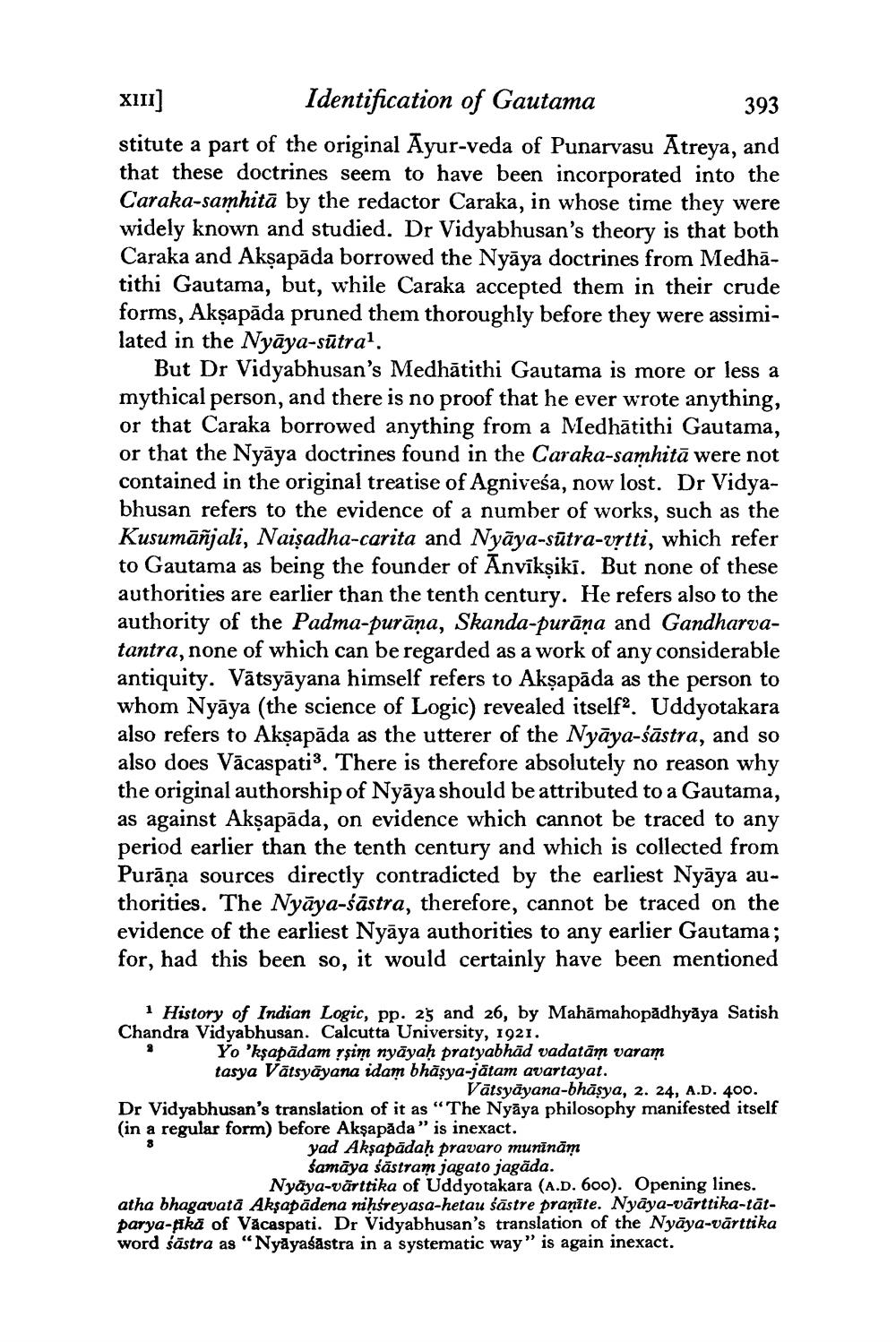________________
XIII Identification of Gautama
393 stitute a part of the original Ayur-veda of Punarvasu Atreya, and that these doctrines seem to have been incorporated into the Caraka-samhitā by the redactor Caraka, in whose time they were widely known and studied. Dr Vidyabhusan's theory is that both Caraka and Akşapāda borrowed the Nyāya doctrines from Medhātithi Gautama, but, while Caraka accepted them in their crude forms, Akşapāda pruned them thoroughly before they were assimilated in the Nyāya-sūtral.
But Dr Vidyabhusan's Medhātithi Gautama is more or less a mythical person, and there is no proof that he ever wrote anything, or that Caraka borrowed anything from a Medhātithi Gautama, or that the Nyāya doctrines found in the Caraka-samhitā were not contained in the original treatise of Agniveśa, now lost. Dr Vidyabhusan refers to the evidence of a number of works, such as the Kusumāñjali, Naişadha-carita and Nyāya-sūtra-vrtti, which refer to Gautama as being the founder of Anvīkșiki. But none of these authorities are earlier than the tenth century. He refers also to the authority of the Padma-purāņa, Skanda-purāņa and Gandharvatantra, none of which can be regarded as a work of any considerable antiquity. Vātsyāyana himself refers to Akşapāda as the person to whom Nyāya (the science of Logic) revealed itself. Uddyotakara also refers to Akşapāda as the utterer of the Nyāya-śāstra, and so also does Vācaspati'. There is therefore absolutely no reason why the original authorship of Nyāya should be attributed to a Gautama, as against Akşapāda, on evidence which cannot be traced to any period earlier than the tenth century and which is collected from Purāņa sources directly contradicted by the earliest Nyāya authorities. The Nyāya-śāstra, therefore, cannot be traced on the evidence of the earliest Nyāya authorities to any earlier Gautama; for, had this been so, it would certainly have been mentioned
History of Indian Logic, pp. 25 and 26, by Mahāmahopadhyāya Satish Chandra Vidyabhusan. Calcutta University, 1921.
Yo 'kşapādam rsim nyāyaḥ pratyabhād vadatām varam tasya Vātsyāyana idam bhāşya-jātam avartayat.
Vātsyāyana-bhāsya, 2. 24, A.D. 400. Dr Vidyabhusan's translation of it as "The Nyāya philosophy manifested itself (in a regular form) before Akşapăda" is inexact.
yad Akşapădah pravaro munīnām
samāya sästram jagato jagāda.
Nyāya-värttika of Uddyotakara (A.D. 600). Opening lines. atha bhagavatā Akşapādena nihfreyasa-hetau śāstre pranīte. Nyāya-vārttika-tātparya-fkā of Vacaspati. Dr Vidyabhusan's translation of the Nyāya-vārttika word śāstra as “Nyāyasastra in a systematic way" is again inexact.




